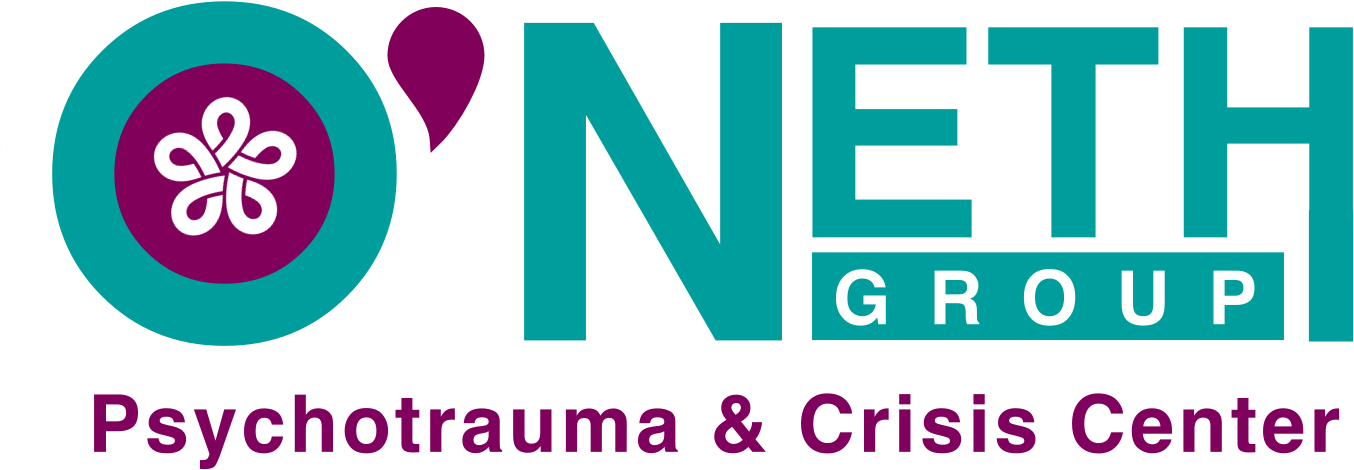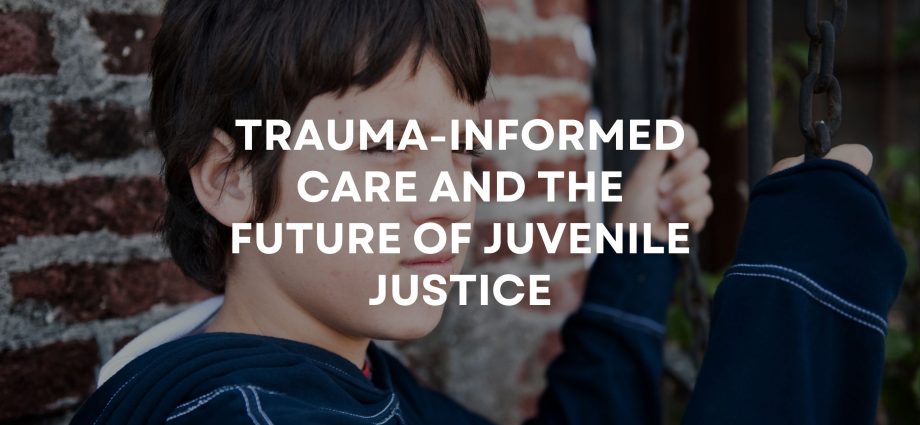The Scars of Trauma: A Pathway to the Justice System
The path to the juvenile justice system is often paved with trauma. For many adolescents entangled within its web, their involvement isn’t simply a matter of bad choices, but a complex consequence of deep-seated experiences of abuse, neglect, violence, and other adverse childhood experiences (ACEs). These experiences leave lasting scars, impacting their behavior, mental health, and ability to successfully reintegrate into society. Understanding and addressing this pervasive trauma is not just a matter of compassion; it’s a fundamental requirement for fostering genuine rehabilitation and breaking the destructive cycle of recidivism.
The Undeniable Link: Trauma and Justice Involvement
Studies consistently reveal a disturbingly high prevalence of PTSD and other trauma-related disorders among incarcerated youth, highlighting the undeniable link between trauma and juvenile justice involvement. These young people are often survivors of profound adversity, witnessing domestic violence, experiencing physical or sexual abuse, or enduring chronic neglect. These ACEs disrupt healthy development, impacting crucial cognitive functions like decision-making, problem-solving, and impulse control, and significantly impair emotional regulation, making it difficult for these adolescents to manage their feelings and reactions in constructive ways. In this context, it becomes clear how trauma can increase the likelihood of behaviors that lead to involvement in the justice system. A young person struggling with the hypervigilance and emotional dysregulation stemming from past trauma may react defensively in situations that others would navigate with ease, potentially leading to misunderstandings and escalating conflict with the law.
The Punitive Paradox: Exacerbating Existing Trauma
The traditional punitive model of juvenile justice, focused primarily on punishment, often inadvertently exacerbates existing trauma, subjecting these young people, already carrying a heavy burden, to further stress and control, reinforcing feelings of powerlessness and fear. This can create a cycle of re-traumatization, making it even harder for them to heal and break free from destructive patterns.
A Call for Change: Shifting Focus to Rehabilitation
This raises crucial questions: How can we, as a society, shift our focus from punishment to genuine rehabilitation? What role do schools, families, and communities play in preventing youth from entering the system in the first place? Early intervention programs, mental health support, and safe, stable housing are crucial in mitigating the impact of trauma and providing young people with the resources they need to thrive.
Trauma-Informed Care: A Path to Healing
Trauma-informed care offers a powerful alternative, recognizing the prevalence of past trauma and adapting all interventions and practices to promote healing and avoid re-traumatization. It acknowledges that a young person’s behavior is often a response to their experiences, a survival mechanism developed in the face of adversity, not simply a reflection of inherent character flaws. Key principles underpin this approach: creating a physically and emotionally safe environment; fostering trust and transparency through open communication and consistent actions; utilizing peer support to build connection and shared understanding; promoting collaboration and mutuality, empowering youth in their own recovery; emphasizing empowerment, voice, and choice; and ensuring cultural sensitivity, recognizing and respecting the diverse backgrounds and experiences of each individual. These principles create a foundation for healing, allowing young people to feel safe enough to begin processing their trauma and developing healthier coping mechanisms.
Therapeutic Modalities: Tools for Recovery
A range of therapeutic modalities can be effective in addressing trauma within a juvenile justice setting. Cognitive-Behavioral Therapy (CBT) can help youth identify and change negative thought patterns and behaviors. Eye Movement Desensitization and Reprocessing (EMDR) can assist in processing traumatic memories and reducing their emotional impact. Art therapy provides a creative outlet for expressing complex emotions and experiences that may be difficult to articulate verbally. Mindfulness-based practices can cultivate present moment awareness and develop self-regulation skills, empowering young people to manage their emotions more effectively.
The Vital Role of Staff: Training and Sensitivity
The role of caregivers and counselors within the juvenile justice system is paramount. Staff must be thoroughly trained in recognizing trauma responses, understanding how trauma manifests in behavior, and utilizing de-escalation techniques that avoid further traumatization. A staff member who understands the nuances of trauma-informed care will respond to a youth’s outburst with empathy and understanding, seeking to de-escalate the situation rather than resorting to punitive measures that could further trigger the young person’s trauma. This shift in approach requires a significant investment in training and ongoing professional development for all staff members.
Community Support and Reintegration: A Holistic Approach
The success of trauma-informed care hinges not only on effective interventions within the justice system but also on robust community support and successful reintegration. Healing from trauma doesn’t end with release from a facility; it’s an ongoing process that requires a stable and supportive environment. Positive role models, including family members and mentors, play a crucial role in reducing recidivism. Mentoring programs can provide guidance, encouragement, and a sense of belonging, helping young people navigate the challenges of reintegration. Education and vocational training are essential for providing opportunities for skill development and economic self-sufficiency. These opportunities not only increase the chances of a successful future but also contribute to a sense of purpose and self-worth, which are vital for healing from trauma.
Restorative Justice: Repairing Harm and Fostering Empathy
Restorative justice programs offer a powerful alternative to traditional punishment. These programs emphasize accountability while also focusing on repairing the harm done to victims and communities. By bringing together the offender, the victim, and community members, restorative justice fosters empathy, promotes healing, and facilitates reintegration. It allows young people to take responsibility for their actions in a meaningful way, understand the impact of their behavior on others, and make amends to those they have harmed. This approach can be particularly impactful for youth who have experienced trauma, as it provides an opportunity to break the cycle of violence and victimization.
Promising Initiatives: “Raise the Age” and Beyond
The “Raise the Age” initiative, which focuses on diverting younger adolescents from the adult criminal justice system, offers a compelling example of a reform grounded in an understanding of adolescent development. This approach recognizes that adolescents are developmentally different from adults and emphasizes rehabilitation over punishment. By keeping younger adolescents within the juvenile justice system, where they can receive appropriate services and support, “Raise the Age” initiatives have shown promising results in reducing recidivism rates. Similarly, Missouri’s rehabilitative juvenile system provides a real-world example of the effectiveness of trauma-informed care. The system emphasizes therapy, personal development, and skill-building, leading to significantly lower recidivism rates compared to traditional punitive models. These examples demonstrate that when we prioritize rehabilitation and address the underlying trauma that often drives delinquent behavior, we can create a more just and effective system.
Investing in the Future: Healing Trauma, Building Stronger Communities
Healing trauma within the juvenile justice system is not simply about reducing crime; it’s about investing in the future of our communities. It’s about giving these young people, who have already endured so much, the opportunity to heal, grow, and reach their full potential. By implementing trauma-informed care, prioritizing rehabilitation over punishment, and fostering strong community support, we can break the destructive cycle of incarceration and create a future where these adolescents can thrive. This is not just a moral imperative; it’s a smart investment in a safer and more just society for all.
The Ongoing Need: Questions and Future Directions
How can we, as a society, better support youth post-incarceration? What resources and services are needed to ensure successful reintegration? These are questions we must continue to grapple with as we strive to create a more equitable and compassionate system of justice.

